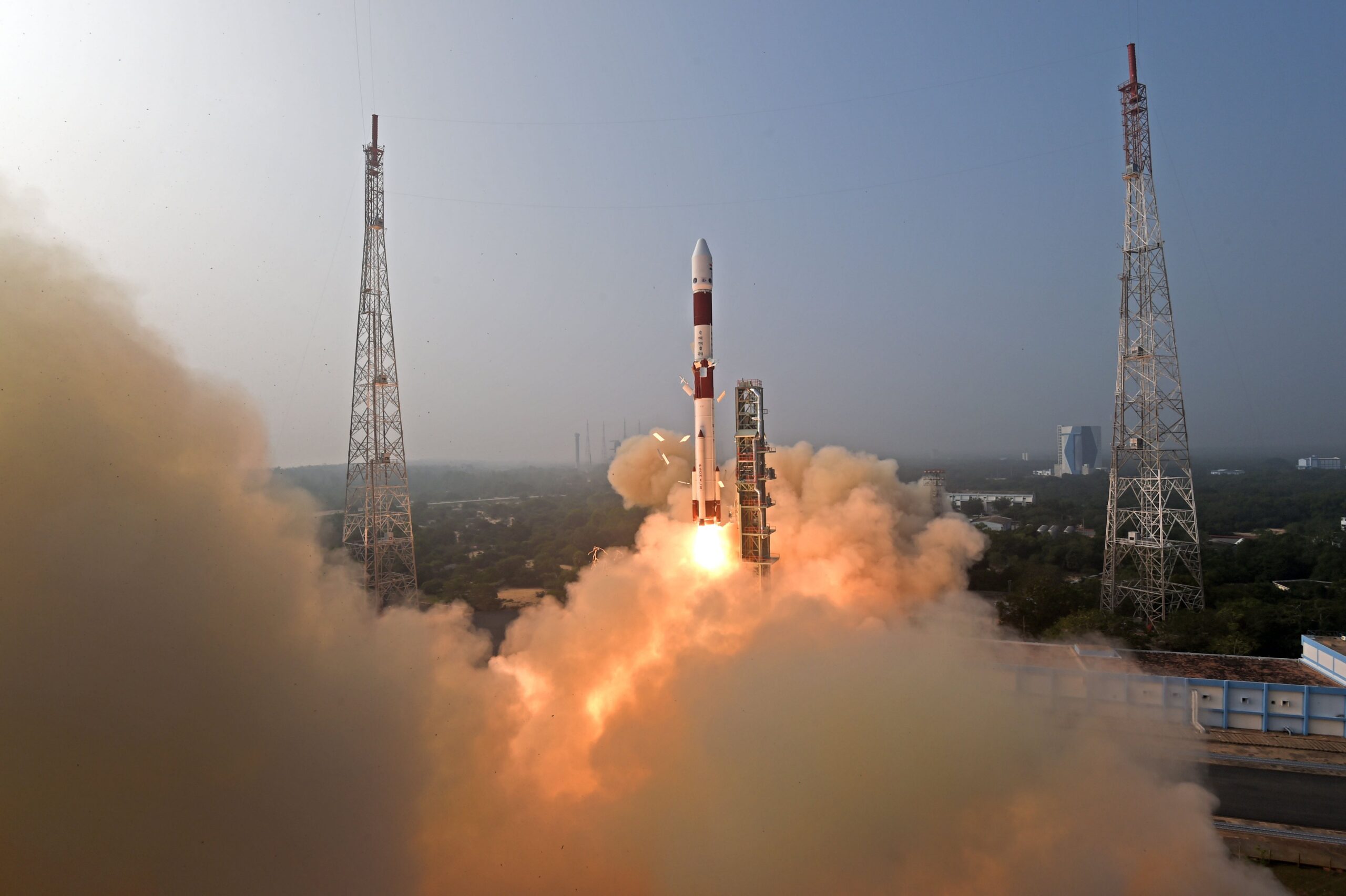The News Freedom
Sriharikota, January 1
The Indian Space Research Organisation (ISRO) initiated its first mission of 2024 by launching XPoSat (X-ray Polarimeter Satellite) alongside 10 other satellites from Sriharikota’s spaceport using a PSLV-C58 rocket. This marks India’s inaugural XPoSat mission, designed to investigate the polarization of intense X-ray sources, specifically delving into the enigmatic realm of black holes. Astrophysicist Dr. RC Kapoor, told the media, highlighted, “XPoSat stands as India’s pioneering X-ray satellite, geared towards detecting X-rays emitted by celestial entities like neutron stars and black holes.”
“Only in 12 months (in 2024), we have to have a minimum of 12 missions on our target. It may exceed depending upon our ability to produce hardware, complete the testing and if things go well. If it is not going well, there could be an impact. Otherwise, we are getting ready for at least 12-14 missions,” said ISRO Chairman S Somnath.
#ISRO begins 2024 in Style!
Successful launch of PSLV-C58/ 🛰 XPoSat Mission.
Proud to be associated with the Department of Space at a time when Team @isro continues to accomplish one success after the other, with the personal intervention & patronage from PM Sh @narendramodi. pic.twitter.com/cisbjpUYpH— Dr Jitendra Singh (मोदी का परिवार) (@DrJitendraSingh) January 1, 2024
A great start to 2024 thanks to our scientists! This launch is wonderful news for the space sector and will enhance India's prowess in this field. Best wishes to our scientists at @isro and the entire space fraternity in taking India to unprecedented heights. https://t.co/4O4F6kRpEX
— Narendra Modi (@narendramodi) January 1, 2024
What is black hole?
Black holes are mysterious cosmic entities born from the remnants of massive stars that have collapsed under their own gravity. These celestial bodies exert such intense gravitational pull that not even light can escape their grasp, rendering them invisible to direct observation.
At the heart of a black hole lies the singularity, a point of infinite density where the laws of physics, as we currently understand them, break down. Surrounding the singularity is the event horizon, an invisible boundary beyond which nothing can escape. Anything crossing this boundary, known as the “point of no return,” is inexorably drawn into the black hole.
Black holes come in various sizes, from stellar-mass black holes, formed by the collapse of massive stars, to supermassive black holes found at the centers of most galaxies, containing millions to billions of times the mass of our Sun.
Despite being invisible, their presence is often inferred through the effects they have on surrounding matter and light. They distort the fabric of spacetime, causing nearby objects to orbit them or spiral into their depths. As matter is pulled in, it forms an accretion disk—a swirling mass of superheated gas and dust emitting powerful radiation, detectable by telescopes.
While black holes remain enigmatic, their study continues to unravel fundamental mysteries of the universe, offering insights into gravity, space, and time itself.
